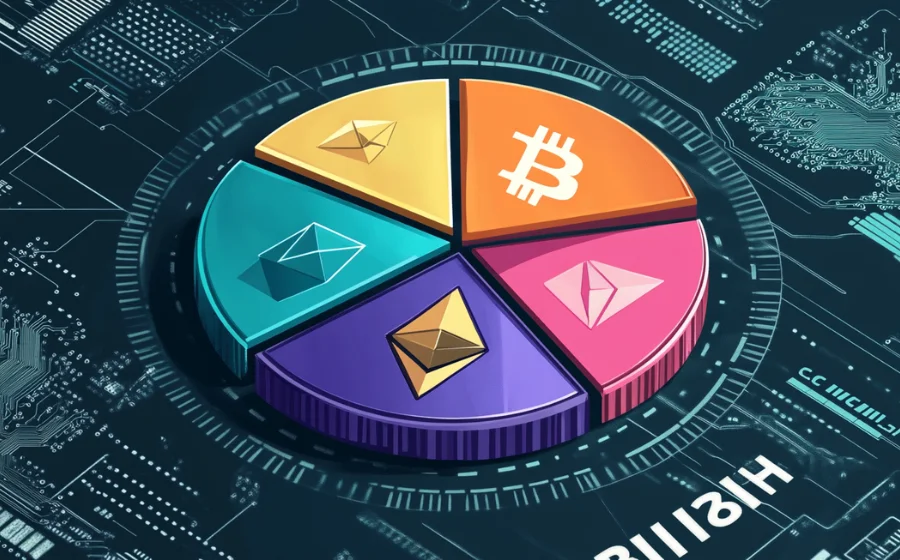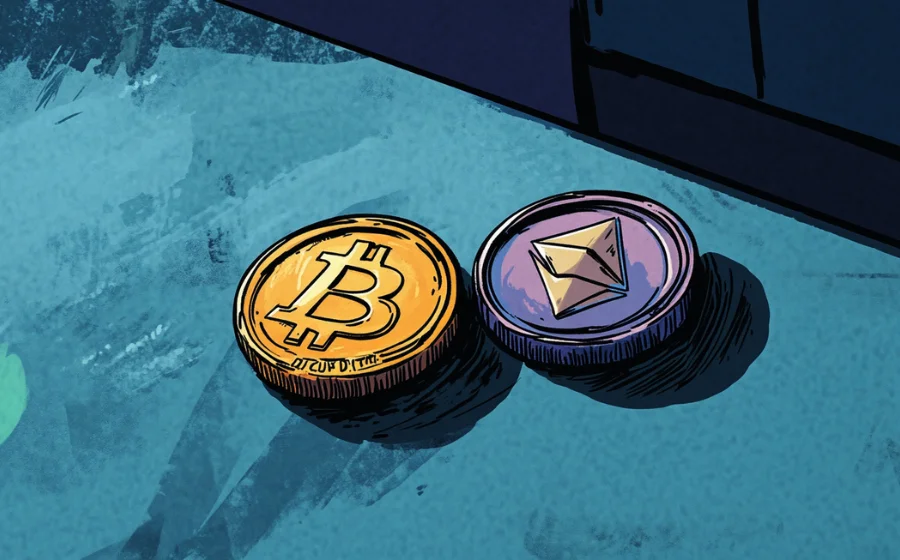
KEYTAKEAWAYS
- Quantitative Easing helps central banks stimulate the economy
by injecting liquidity and encouraging lending when interest rates hit zero.
- QE influences crypto markets by weakening confidence in fiat
and driving demand for decentralized, limited-supply digital assets.
- While QE fuels short-term growth, it carries long-term risks
including inflation, asset bubbles, and financial market distortions.

CONTENT
Quantitative Easing (QE) is a monetary policy where central banks inject liquidity to boost economic growth, lower interest rates, and indirectly impact crypto and inflation.
WHAT IS QUANTITATIVE EASING (QE)?
Quantitative Easing (QE) is a powerful monetary policy tool used by central banks to stimulate economic growth, especially during periods of recession or financial crisis. When interest rates are already near zero and cannot be lowered further, central banks turn to Quantitative Easing to inject liquidity into the financial system.
📌 How Quantitative Easing Works
Through Quantitative Easing, a central bank purchases large-scale financial assets—such as government bonds or corporate securities—from the open market. These purchases increase the money supply, reduce long-term interest rates, and encourage lending and investment. By doing so, Quantitative Easing aims to support consumer spending and overall economic activity.
📌 The Purpose of Quantitative Easing
The main goal of Quantitative Easing is to stimulate the economy when conventional tools like interest rate cuts are no longer effective. It helps:
- Increase liquidity in financial markets
- Promote borrowing and investment
- Combat deflationary pressure
- Support employment and economic recovery
📌 Why Is Quantitative Easing Called “Printing Money”?
Although often referred to as “printing money,” Quantitative Easing doesn’t involve printing physical currency. Instead, central banks create digital money to buy assets, injecting funds into the banking system. This electronic money helps lower interest rates and boosts financial activity.
📌 Origins of Quantitative Easing
Quantitative Easing was first introduced by the Bank of Japan in the late 1990s to address long-term deflation and economic stagnation. It gained global recognition after the 2008 financial crisis, when the U.S. Federal Reserve adopted QE on a massive scale. Since then, other major economies have used Quantitative Easing as a key strategy to combat downturns.
>>> More to read: What is Quantitative Tightening & How Does it Affect Crypto?
WHEN IS QUANTITATIVE EASING (QE) USED?
Before implementing Quantitative Easing (QE), central banks typically rely on interest rate cuts to stimulate the economy. By lowering the policy rate, both deposit rates and loan rates in the banking system decrease:
✅ Lower deposit rates discourage people from keeping money in the bank, encouraging them to spend or invest instead.
✅ Lower loan rates reduce borrowing costs, making it easier and more attractive for individuals and businesses to take out loans and increase spending.
The goal of interest rate cuts is to boost liquidity and stimulate economic activity by encouraging money to circulate through the economy.
However, when interest rates approach zero (a situation often referred to as the zero lower bound), traditional rate cuts become ineffective. At this point, central banks can no longer lower rates to support growth. That’s when they turn to Quantitative Easing as a more aggressive tool to stimulate the market.
📌 Why Use Quantitative Easing at This Stage?
In a near-zero interest rate environment, Quantitative Easing provides an alternative way to support the economy. Instead of adjusting interest rates, central banks purchase large quantities of financial assets—such as government or corporate bonds—to:
- Inject liquidity into the financial system
- Encourage banks to lend more freely
- Lower long-term interest rates
- Support asset prices and boost investor confidence
- Stimulate consumer spending and business investment
As a result, Quantitative Easing is typically used in the following scenarios:
- When interest rates are near zero and cannot be lowered further
- During economic recessions or financial crises
- When inflation is too low or deflation is a concern
- When market liquidity is tightening and intervention is needed
>>> More to read: What is Quantitative Trading Strategy?
POTENTIAL ADVANTAGES & DISADVANTAGES OF QUANTITATIVE EASING
✅ Potential Advantages of Quantitative Easing
-
Increased Credit Availability
Through asset purchases by the central bank, Quantitative Easing injects liquidity into the financial system, encouraging commercial banks to offer more loans.
-
Boost in Borrowing Activity
Low interest rates created by Quantitative Easing make borrowing cheaper. This incentivizes consumers and businesses to take on new loans for spending, investment, or expansion.
-
Higher Consumer Spending
With easier access to loans and lower interest rates, individuals are more likely to spend rather than save. This increased spending fuels economic growth and supports demand across industries.
-
Job Creation and Business Growth
As companies gain access to capital and see increased revenues due to stronger consumer demand, they’re more likely to expand operations and hire additional workers, helping reduce unemployment.
⚠️ Potential Disadvantages of Quantitative Easing
-
Inflation Risk
By increasing the money supply, Quantitative Easing can lead to higher inflation. If too much money chases too few goods, prices rise. Without careful management, this could spiral into hyperinflation.
-
No Lending Obligation for Banks
Although Quantitative Easing gives banks more reserves, there’s no guarantee they will lend it out. For example, during the 2008 financial crisis, many banks in the U.S. chose to hold excess reserves instead of increasing loans.
-
Risk of Over-Leverage
Cheap borrowing can lead to excessive debt. Consumers and businesses may take on more loans than they can manage, increasing the risk of defaults and long-term financial instability.
-
Negative Impact on Other Asset Markets
Bond markets, in particular, may react negatively to Quantitative Easing due to sudden shifts in interest rates and investor sentiment. Volatility and uncertainty in fixed-income markets often increase during QE periods.
>>> More to read: What is Fundamental Analysis? Key to Value Investing
HOW DOES QUANTITATIVE EASING AFFECT CRYPTO?
Quantitative Easing (QE) has played a major role in shaping the macroeconomic environment that supports the growth of the crypto market. While QE is a traditional monetary policy tool used by central banks, it indirectly influences investor behavior, asset pricing, and the appeal of alternative financial systems like cryptocurrencies.
When central banks engage in Quantitative Easing, they flood the market with liquidity and keep interest rates low. This environment can reduce confidence in fiat currencies over time, as the increased money supply often raises concerns about inflation or even currency debasement. As a result, investors may look for alternative stores of value—like Bitcoin or other cryptocurrencies—to hedge against inflation.
In fact, some of the most significant bull runs in the crypto market have coincided with major QE programs, such as those launched after the 2008 global financial crisis and during the COVID-19 pandemic. These periods of aggressive money printing pushed many investors toward decentralized, limited-supply assets.
Moreover, the rise of crypto is also philosophical: it reflects a growing desire for systems outside the control of central banks, especially in a world where Quantitative Easing can be seen as distorting markets and wealth distribution.
📌 Summary
While Quantitative Easing and crypto belong to different worlds—traditional finance vs. decentralized finance—they are closely connected. QE has indirectly fueled interest in crypto assets as inflation hedges, alternative investments, and symbols of financial independence.
>>> More to read: What is Technical Analysis? A Beginner’s Guide
▶ Buy Crypto at Bitget
ꚰ CoinRank x Bitget – Sign up & Trade!


















